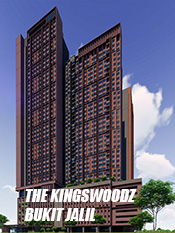Malaysia’s heavy rainfall is both a blessing and a bane. A blessing because our dams will not be starved and we have enough clean water for our sustenance and for the many everyday uses.
Unlike many parts of the world today that have to endure long dry spells, we are lucky that we don’t have to put up with water rationing. Rain also helps to bring down the pollutants in the air.
However, the heavy rainfall has also heralded floods, soil erosion and landslides. With the heavy downpour, news of landslips and landslides are making the headlines again, with some apartment dwellers near landslide hit areas worrying that their buildings will not be safe for dwelling, and their lives may be in danger.
It is almost a year since the Bukit Antarabangsa tragedy last Dec 6 that claimed five lives and caused considerable damage to properties in the area. Many families had to be evicted from their homes.
A RM70mil fund has been set up to rehabilitate the slopes in the residential areas of Bukit Antarabangsa and remedial work is still ongoing and will take two years to complete.
There have been other recent cases of landslides in the area after heavy downpours and with so many high rise apartments there, many residents will be having sleepless nights everytime it rains heavily.
Rampant land clearing and felling of trees to make way for development have all contributed to the current deterioration in our hill slopes.
Immediate action must be taken to ensure the safety of all residents in the area and those who bought into the promises of unobstructed hill and city views.
While slope stabilisation measures are important to strengthen these slopes, it is crucial to have holistic hill slope management guidelines for all the various stakeholders to know their responsibilities.
Before planning any hill slope development, developers should conform to the specifications on hill slope development.
Hillslopes are classified according to their varying gradients. Class 1 is for gradients of less than 15 degrees; Class 2 (between 15 and 25 degrees); Class 3 (between 25 and 35 degrees); and Class 4 (over 35 degrees).
Under new federal Guidelines for Hillside and Highland Areas Development Planning, development on all Class IV slopes is banned.
Development on Class III slopes that have signs of erosion, land instability or sensitive geological conditions, is also banned.
Malaysia has vast tracts of hilly terrains and these hillslopes should not be left unattended.
We certainly need top-notch hillslope management expertise and guidelines to ensure they are properly managed and are sustainably maintained.
Prudent hillslope management measures that include proper slope-safety management and warning system will ensure all the land owners, residents, developers and the local authorities will be proactive and take it as their joint responsibilities to safeguard the hillslopes.
Unsafe slopes must be rectified on a timely and regular basis.
Setting up a dedicated federal agency to issue and enforce guidelines and standards for hillslope management, approve hillside development and monitor slopes will be a good start.
It is high time the authorities and the people inculcate a culture of strong maintenance and safety as a way of life. Otherwise, there will be many more sleepless nights for many high-rise dwellers near slopy areas.
Deputy news editor Angie Ng hopes more developers will adopt holistic environment-friendly industry practices as part of their corporate responsibilities and uphold safety above all else.
By The Star (by Angie Ng)










No comments:
Post a Comment